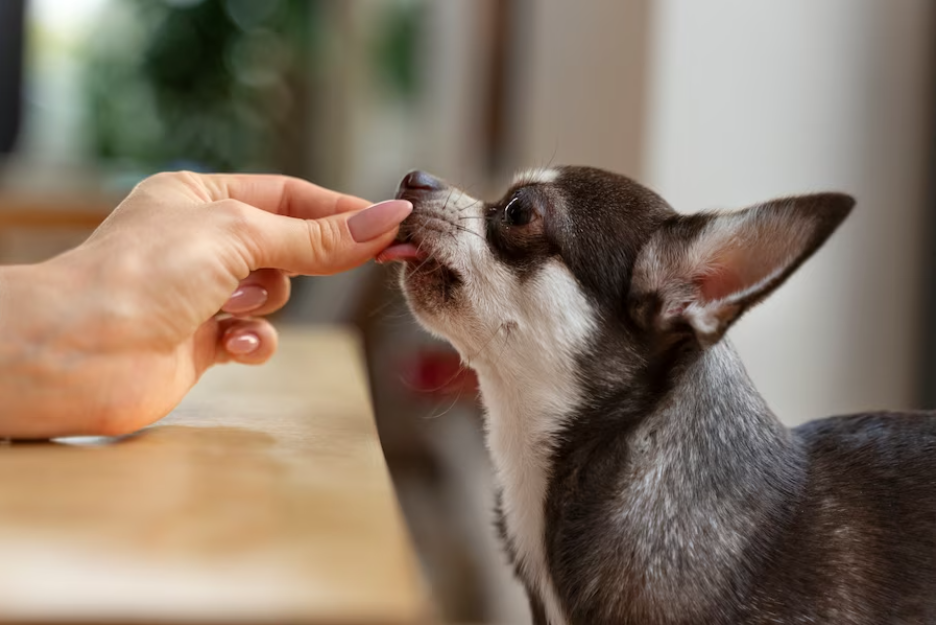When Flea and Tick Treatments Fail: Causes, Solutions, and Alternative Approaches

As pet owners, we all want to provide the best care for our furry friends. We diligently apply flea and tick treatments, hoping to keep our pets healthy and pest-free. But what happens when those treatments fail? It can be frustrating and worrisome, not to mention itchy for both you and your pet. In this blog post, we’ll explore the causes of flea and tick treatment failure in pets as well as strategies for overcoming it. Plus, we’ll take a look at some alternative approaches that might just do the trick! Let’s dive in!
Brief overview of flea and tick treatment failure in pets
Flea and tick infestation in pets is a common problem that pet owners face. It’s essential to treat it quickly because these pests can cause discomfort, transmit diseases, and even lead to death if left unchecked. However, treating fleas and ticks isn’t always as simple as applying the recommended treatment.
Pet owners often encounter situations where flea and tick treatments fail to work effectively on their furry friend. Despite using topical solutions or oral medications, some pets still have fleas or ticks after treatment.
The reason for treatment failure could be due to several factors such as incorrect dosage, improper application of products, resistance built up by fleas/ticks against pesticides over time – making them immune to certain chemicals.
Moreover, inconsistent use of flea/tick preventive measures can also contribute significantly towards ineffective treatments. If you don’t stick with a regular schedule when administering medication or grooming your pet’s fur regularly – then chances are they will continue suffering from flea/tick infestations.
In summary, understanding the causes of flea and tick treatment failure is key in finding effective solutions for your pet’s pest problems.
Causes of treatment failure
There are several reasons why flea and tick treatments may fail to work effectively for your pets. One of the most common causes is resistance to the treatment. This happens when fleas or ticks have become resistant to certain chemicals used in popular treatments such as spot-on products, oral medications, collars, and shampoos.
Another reason could be incorrect application of the product. Some pet owners might not follow instructions properly on how to use these products leading to less effective results than expected. Using expired or low-quality products can also affect their efficacy.
In addition, a lack of consistency in treating your pet can contribute significantly towards treatment failure. Infrequent application allows time for fleas and ticks to breed which leads them developing immunity against some medication over time.
Furthermore, environmental factors come into play here too- pets who socialize with other animals often will have higher chances of getting infested by fleas and ticks again after proper treatment as they can easily catch new pests from others around them.
The severity level of an infestation also matters since heavy flea/tick loads require stronger doses resulting in faster relief while mild cases don’t need that much chemical strength which might cause unnecessary side effects if administered without caution.
Strategies for overcoming treatment failure
When flea and tick treatments fail, it can be frustrating for pet owners. However, there are strategies to overcome treatment failure. Firstly, make sure you are using the correct product for your pet’s weight and species. Some products may not work effectively if they are not used according to instructions.
Another strategy is rotating between different flea and tick products that have different active ingredients. This prevents parasites from developing resistance to a particular ingredient in one product.
It is also important to treat all pets in the household at the same time as well as treating the environment where fleas and ticks reside. Vacuuming regularly and washing bedding helps reduce the number of pests in your home.
If traditional chemical treatments do not work for your pet or you prefer a more natural approach, consider alternative remedies such as essential oils or herbal supplements. Consult with a veterinarian before trying any alternative treatments.
In summary, strategies for overcoming treatment failure include using appropriate products, rotating between products with different active ingredients, treating all pets simultaneously along with their environment, and considering alternative remedies under veterinary guidance.
Alternative flea and tick treatments
There are several alternative flea and tick treatments available for pet owners who have experienced treatment failure or prefer to take a more natural approach. One of the most popular alternatives is the use of essential oils, such as lavender, citronella, and peppermint oil. These oils can be applied topically or diffused in the home.
Another option is diatomaceous earth (DE), which is a fine powder made from fossilized algae that dehydrates fleas and ticks upon contact. DE can be sprinkled on carpets, furniture, and even directly on pets’ fur.
Some pet owners also swear by feeding their pets garlic or adding it to their diet as a supplement. Garlic has natural antibacterial properties that repel fleas and ticks.
A lesser-known alternative treatment is apple cider vinegar (ACV). ACV can be added to a pet’s water bowl or sprayed onto their coat after dilution with water. It helps keep pests away due to its acidic nature.
While these alternative treatments may not work for every pet owner, they offer safe options for those who want to avoid harsh chemicals found in traditional flea and tick treatments. As always, consult with your veterinarian before trying any new treatment methods on your furry friend.
Environmental management and preventive measures
Environmental management and preventive measures play a crucial role in keeping flea and tick infestations at bay. It involves controlling the environment where your pet lives, eats or sleeps to reduce the risk of flea and tick infestations.
One way to effectively manage your pet’s surrounding environment is by regularly vacuuming carpets, floors, furniture, and curtains thoroughly. This will help get rid of fleas’ eggs, larvae or pupae hiding in these areas. Additionally, washing your pet’s bedding frequently can also eliminate fleas that may be present there.
Another preventive measure is maintaining a clean yard free from debris such as leaves or branches. Regularly mowing the lawn and trimming overgrown bushes helps keep ticks away while limiting their habitat.
Using natural remedies like cedar chips around the house can help repel fleas thanks to its aromatic oils which repel insects naturally without harming pets in any way. Similarly, essential oils such as lavender oil are effective insect repellents for both cats and dogs when used diluted with a carrier oil like coconut oil.
By taking environmental management seriously coupled with other alternative approaches discussed earlier on this article alongside advice from veterinarians on further steps you need to take; you stand better chances of winning against flea and tick infestations that may seem stubborn at first glance!
Consulting with a veterinarian
Consulting with a veterinarian is an essential step in dealing with flea and tick treatment failure. Your vet has the expertise to diagnose any underlying health issues that may be contributing to the problem. They can also recommend alternative treatments that are safe and effective for your pet.
During your consultation, provide your vet with as much information as possible about the products you have used, how long you have been using them, and how frequently you apply them. This will help your vet determine if there is a resistance issue or if another factor is causing the treatment failure.
If necessary, your vet may perform tests to confirm whether fleas or ticks are present on your pet. This will help guide their treatment recommendations and ensure they select options most appropriate for your pet’s specific needs.
It’s important to note that consulting with a veterinarian should not be limited only when treating flea and tick infestations but also during regular check-ups. Flea prevention options like collars, shampoos, sprays or monthly oral drugs can cause side effects such as skin irritation, vomiting or diarrhea among others which should not be overlooked by owners.
Seeking guidance from a professional helps avoid making mistakes in handling cases of resistance,treatment failure which could result in serious harm towards pets’ wellbeing
Conclusion
Flea and tick treatments can fail for various reasons. It is important to consult with a veterinarian when facing treatment failure in pets. They can help identify the cause of the problem and suggest alternative solutions or preventive measures.
Environmental management and prevention should be an essential part of any flea and tick control program. Regular cleaning, vacuuming, and grooming can reduce the risk of infestation. There are also natural remedies that pet owners can use as alternatives to chemical treatments.
When it comes to treating fleas and ticks, prevention is key. By understanding why treatments fail and taking proactive measures against infestations, pet owners can keep their furry friends safe from these pesky parasites all year round.
FAQs
What can I do if flea treatment doesn’t work?
If a flea treatment isn’t working, consult your veterinarian for alternative options. They may recommend trying a different product, adjusting the dosage, or suggesting an integrated pest management approach that combines multiple flea control methods. Additionally, ensure you are treating the environment by vacuuming regularly, washing pet bedding, and using flea control products in your home and yard.
What is an alternative to tick treatment?
Alternatives to conventional tick treatments include natural remedies, such as essential oils (e.g., cedarwood, lavender, or lemongrass), apple cider vinegar, or diatomaceous earth. Preventive measures like regular grooming, avoiding tick-infested areas, and maintaining a clean yard can also help. Always consult your veterinarian before trying a new treatment to ensure it is safe and effective for your pet.
What are alternatives to flea medicine?
Alternatives to flea medicine include natural remedies, alternative medications, and preventive measures. Some natural remedies consist of essential oils, diatomaceous earth, and apple cider vinegar. Preventive measures include regular grooming, vacuuming, washing pet bedding, and maintaining a clean environment.
What are the most effective ways to solve flea problems?
The most effective ways to solve flea problems involve a combination of treatments and preventive measures: Use veterinarian-recommended flea treatments on your pets Regularly groom and inspect pets for fleas Vacuum your home frequently, focusing on carpets, furniture, and pet bedding Wash pet bedding, soft toys, and other washable items in hot water Treat your yard for fleas using flea control products or natural alternatives Maintain a clean environment to discourage flea infestations
What is an alternative to flea treatment for dogs?
Alternatives to flea treatment for dogs include natural remedies like essential oils (e.g., lavender or lemongrass), diatomaceous earth, and hypoallergenic flea collars. Regular grooming and maintaining a clean environment can also help prevent flea infestations. Always consult your veterinarian before trying a new treatment to ensure it is safe and effective for your dog.
Why is my flea and tick medicine not working?
If your flea and tick medicine isn’t working, there could be several reasons: The product may be expired or improperly stored, reducing its effectiveness The dosage or application may be incorrect Fleas or ticks in your area may have developed resistance to the specific product The environment (home and yard) may not have been adequately treated, leading to re-infestation Consult your veterinarian for advice on alternative treatments and additional preventive measures to ensure effective flea and tick control.



